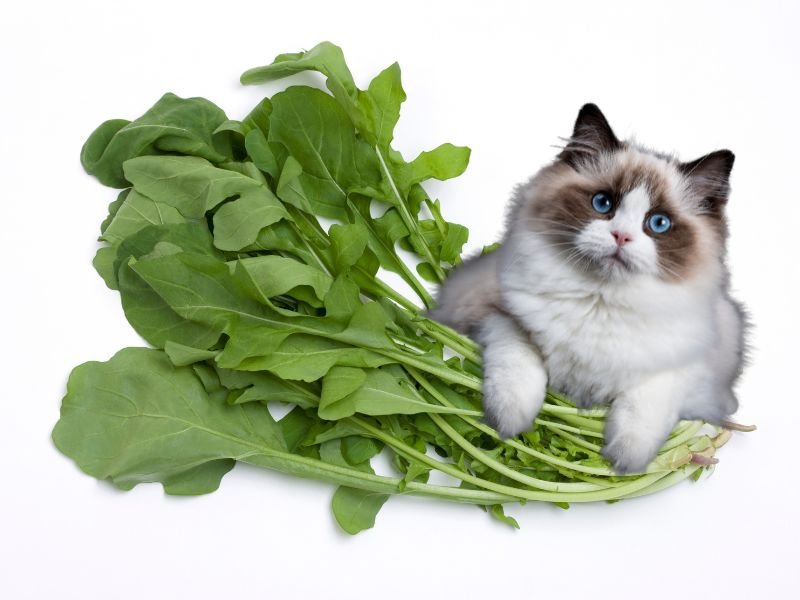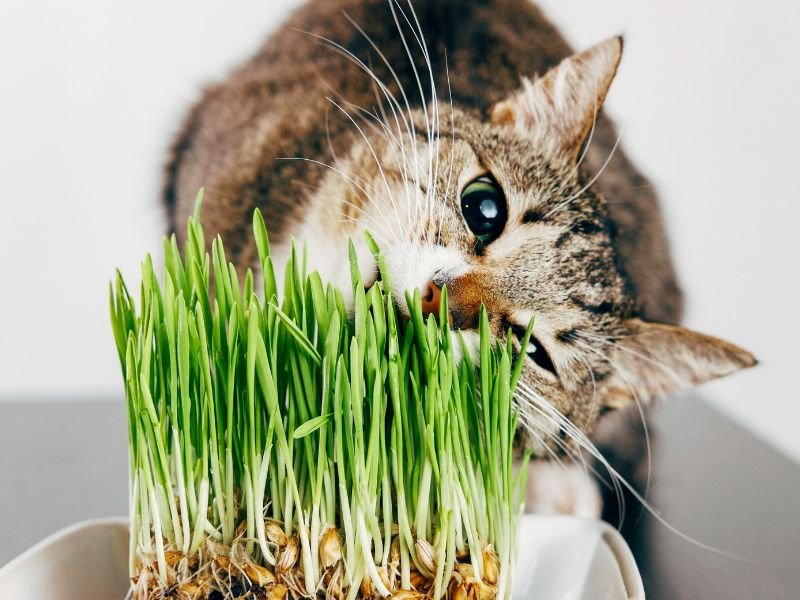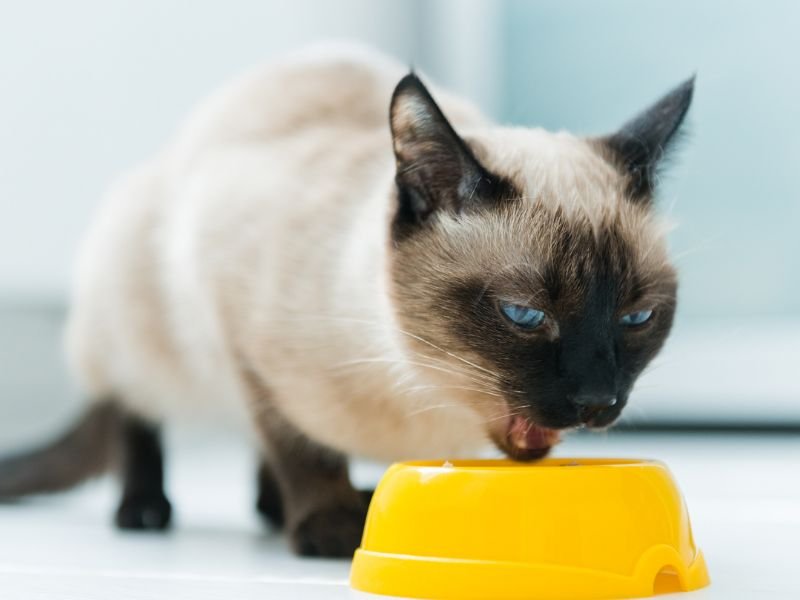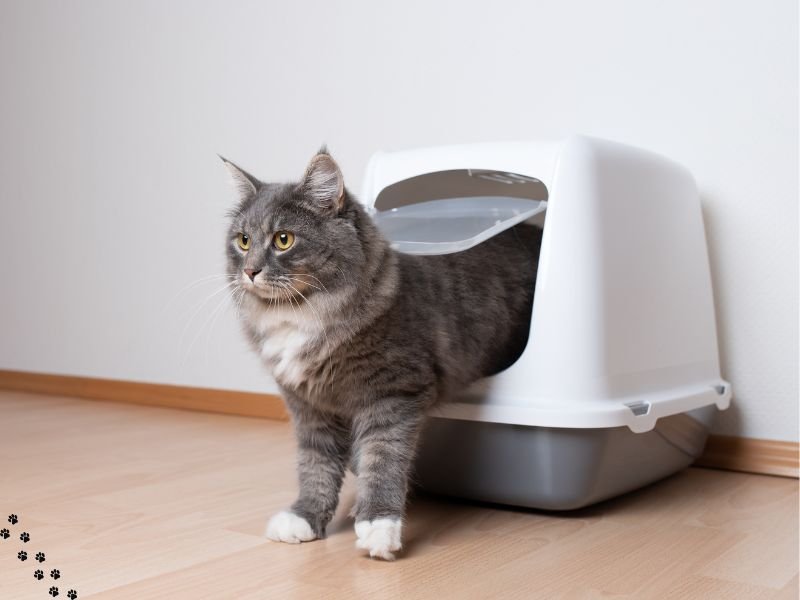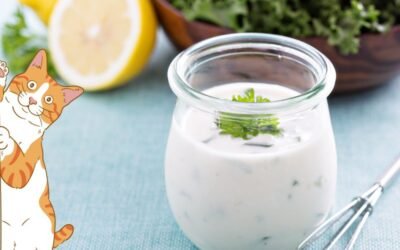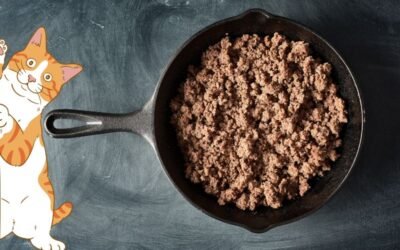Arugula, a leafy green vegetable known for its peppery flavor, has been gaining popularity among health-conscious consumers.
Rich in vitamins and minerals, it’s no wonder many pet owners wonder if this nutrient-packed food could be incorporated into their feline friend’s diet.
Table of Contents
- Can Cats Eat Arugula?
- The Nutritional Benefits of Arugula for Cats
- Is Arugula Safe for Cats to Consume? Exploring Potential Risks and Precautions
- Incorporating Arugula into Your Feline’s Diet: Tips and Recommendations
- How Much Arugula Can Cats Eat? Understanding Appropriate Serving Sizes
- Arugula versus Other Leafy Greens: Which Options Are Best for Your Cat’s Health?
- Delicious Arugula Recipes for Cats: Wholesome Treats to Try at Home
- FAQs About Can Cats Eat Arugula
- Final Words
Can Cats Eat Arugula?
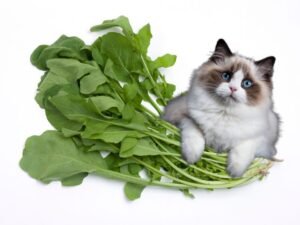
Yes, cats can eat arugula.
Arugula is a leafy green vegetable that is generally safe for cats to consume.
However, it’s important to note that cats are obligate carnivores, meaning their diet should primarily consist of meat.
While small amounts of arugula can be offered as a treat or added to their regular diet occasionally, it should not be a significant part of their meal plan.
The Nutritional Benefits of Arugula for Cats
In this section, we delve into the various nutritional benefits that arugula can offer to your beloved feline companion.
Arugula, also known as rocket or rucola, is a leafy green vegetable that belongs to the Brassica family.
While primarily considered safe for human consumption, it’s important to understand how arugula can benefit cats and whether it should be a part of their diet.
Arugula is an excellent source of vitamins A, C, and K, which are essential for maintaining your cat’s overall health.
Vitamin A aids in vision, reproductive health, and immune function, while vitamin C acts as an antioxidant, supporting tissue repair and enhancing the immune system. Vitamin K plays a crucial role in blood clotting, promoting optimal wound healing.
Additionally, arugula offers a good amount of dietary fiber, which aids in digestion and can prevent constipation in cats.
This leafy green also contains phytonutrients, such as glucosinolates, which have anti-inflammatory and anti-cancer properties.
These compounds can help reduce the risk of chronic diseases and support your cat’s well-being.
However, it’s important to note that arugula should only be given to cats as an occasional treat or supplement to their regular diet.
While it offers valuable nutrients, it should not replace a balanced and complete feline diet.
To summarize:
- Arugula provides vitamins A, C, and K, as well as dietary fiber, which supports your cat’s overall health.
- Phytonutrients found in arugula offer anti-inflammatory and anti-cancer properties, providing additional health benefits.
- Arugula should only be given to cats as an occasional treat or supplement and not as a main part of their diet.
- Consulting with a veterinarian is essential before incorporating arugula or any new food item into your cat’s diet.
Is Arugula Safe for Cats to Consume? Exploring Potential Risks and Precautions
In order to determine whether arugula is safe for cats to consume, it is essential to consider the potential risks and precautions associated with feeding this leafy green to our feline friends.
While arugula itself is not toxic to cats, there are certain factors to be mindful of to ensure their safety and well-being.
One important consideration is the amount of arugula given to cats. Feeding excessive amounts of arugula can lead to gastrointestinal upset, including diarrhea or vomiting.
It is crucial to introduce new foods gradually and in small quantities to avoid overwhelming their digestive system.
Additionally, it is crucial to ensure that the arugula provided to cats is thoroughly washed and free of any pesticides or chemicals.
Organic arugula is highly recommended to minimize the potential ingestion of harmful substances.
Furthermore, it is essential to remove any tough stems or wilted leaves, as these can pose a choking hazard or cause stomach irritation.
As with any new addition to a cat’s diet, it is vital to monitor their individual reaction to arugula.
Some cats may develop an allergic reaction to arugula, characterized by symptoms such as itching, sneezing, or gastrointestinal distress.
If any adverse reactions are observed, it is recommended to discontinue feeding arugula and consult with a veterinarian for further guidance.
While arugula can be a nutritious addition to a cat’s diet when given in moderation and with proper precautions, it is always advisable to consult with a veterinarian before introducing any new food into their routine.
A veterinarian can provide personalized guidance based on the specific dietary needs and health conditions of each individual cat, ensuring their overall safety and well-being.
Incorporating Arugula into Your Feline’s Diet: Tips and Recommendations
Incorporating arugula into your feline’s diet can provide a variety of health benefits, but it’s essential to introduce it gradually and in moderation.
Here are some tips and recommendations to make the process easier and more enjoyable for your cat:
1. Start Slowly
When introducing arugula to your cat’s diet, it’s crucial to start with small quantities. Begin by offering a tiny piece of arugula as a treat and observe their reaction.
If they show interest and tolerate it well, you can gradually increase the portion size over time.
2. Ensure Freshness
Always ensure that the arugula you offer to your cat is fresh and free from any pesticides or chemicals. Organic options are usually the safest choice.
Wash the leaves thoroughly and remove any stems or tough parts to make it easier for your cat to chew and digest.
3. Mix with Other Foods
To make the transition easier, you can mix arugula with your cat’s regular food. Finely chop or puree the arugula and mix it in with their wet or dry food.
This will help your cat become familiar with the taste and texture of arugula while still receiving the essential nutrients from their regular meals.
4. Observe for Digestive Issues
It’s important to monitor your cat’s digestive response when introducing arugula. Some cats may experience stomach upset or diarrhea if they consume too much.
If you notice any adverse reactions, reduce the amount or frequency of arugula in their diet or consult with your veterinarian.
5. Offer Variety
While arugula can be a beneficial addition to your cat’s diet, it’s crucial to provide a balanced and varied meal plan. Incorporate other safe and nutritious greens, such as spinach or kale, to ensure your cat receives a wide range of vitamins and minerals.
Remember, every cat is unique, and their dietary needs may vary. It’s important to consult with your veterinarian before introducing any new food into your cat’s diet, including arugula.
They can provide personalized recommendations based on your cat’s specific health conditions and nutritional requirements.
How Much Arugula Can Cats Eat? Understanding Appropriate Serving Sizes
In order to ensure your cat’s health and well-being, it is essential to understand the appropriate serving sizes when it comes to feeding them arugula.
While arugula can be a nutritious addition to your feline’s diet, it should only be given in moderation due to certain factors.
Consider Your Cat’s Individual Needs
Every cat is unique and may have different dietary requirements. It is important to consult with your veterinarian to determine the appropriate serving size of arugula for your furry friend.
Factors such as age, weight, overall health, and any preexisting medical conditions should be taken into consideration when incorporating new food into their diet.
Introduce Arugula Gradually
When introducing arugula to your cat’s diet, it is recommended to start with small portions. It is advisable to offer a small amount, approximately a teaspoon, and observe their reaction.
Monitor for any signs of digestive discomfort or allergies. If your cat tolerates arugula well, you can gradually increase the serving size over time.
Balancing Arugula with Other Foods
While arugula can provide certain nutritional benefits, it is important to remember that cats are obligate carnivores. Their primary source of nutrition should come from animal-based proteins.
Arugula should be considered as an occasional treat or a supplement to their regular diet, rather than a staple food.
Avoid Overfeeding
Excessive consumption of arugula or any other leafy greens can potentially lead to digestive issues, such as diarrhea or upset stomach, in cats.
It is crucial not to overfeed your cat with arugula and to maintain a balanced diet that fulfills its nutritional needs.
It is always advisable to consult your veterinarian before incorporating any new food into your cat’s diet.
Only they can provide the best guidance on appropriate serving sizes and help you make informed decisions about your feline friend’s nutrition.
Arugula versus Other Leafy Greens: Which Options Are Best for Your Cat’s Health?
In this section, we will delve into the comparison between arugula and other leafy greens to determine which options are most beneficial for your cat’s health.
While arugula offers a range of nutritional benefits, it’s essential to consider how it stacks up against other greens commonly found in feline diets.
When it comes to leafy greens suitable for cats, arugula stands out as an excellent choice. It’s peppery taste and nutrient-rich composition makes it a popular option for pet owners looking to incorporate variety into their feline’s diet. However, it’s worth noting that moderation is key, as with any new food introduction.
While arugula has numerous advantages, it is crucial to explore other leafy greens to ensure a well-rounded approach to your cat’s nutritional needs.
Some alternatives to consider include spinach, kale, and lettuce. Spinach is a common green that most cats tolerate well, and it provides an array of vitamins and minerals that contribute to their overall health.
Kale, another leafy green often featured in human diets, can also be an excellent addition to your cat’s nutrition. Its high fiber content can aid digestion, and it packs a punch in terms of vitamins A, C, and K.
However, it’s crucial to chop kale into small pieces to prevent choking hazards and promote easier digestion.
Lettuce, particularly varieties such as romaine, can be a low-calorie option to incorporate into your cat’s meals.
While lettuce may not provide the same level of nutritional value as arugula, it can contribute to hydration, as it contains a high water content.
Remember, when introducing any leafy green into your cat’s diet, it’s important to monitor their reaction and well-being.
Not all cats may have the same tolerance or preferences, so it’s important to consult with your veterinarian to identify the best leafy green options for your feline companion.
Delicious Arugula Recipes for Cats: Wholesome Treats to Try at Home
In this section, we will explore some tasty arugula recipes that you can prepare for your feline friend.
While arugula can be a healthy addition to your cat’s diet, it is essential to ensure that these recipes are safe, balanced, and meet your cat’s nutritional requirements.
1. Arugula and Chicken Treats
This simple recipe combines the flavors of chicken and arugula into a delicious treat for your cat. Start by cooking boneless, skinless chicken breasts and finely chopping them.
Then, steam a handful of fresh arugula until it wilts. Mix the chopped chicken with the steamed arugula and mash the mixture together.
Shape the mixture into small bite-sized treats and refrigerate them until they firm up.
2. Arugula and Tuna Salad
This recipe combines the nutritious benefits of arugula with the irresistible taste of tuna. Begin by draining and flaking a can of tuna.
Steam a small handful of arugula until just wilted. In a mixing bowl, combine the flaked tuna and arugula, then add a teaspoon of olive oil for added moisture.
Mix well and serve a small portion to your cat as a special treat.
It is crucial to remember that these arugula recipes should be given in moderation, as treats, and not as a replacement for a complete and balanced diet.
Always introduce new foods gradually and monitor your cat for any adverse reactions. If you have concerns about incorporating arugula into your cat’s diet or any other dietary queries, consulting your veterinarian is highly recommended.
FAQs About Can Cats Eat Arugula
Can cats eat arugula without any concern?
Cats can eat arugula in small quantities without any concern. However, it is important to note that arugula should not be a significant part of a cat’s diet.
Is arugula toxic to cats?
Arugula is not toxic to cats, but it is recommended to feed it to them infrequently and in small amounts. Too much arugula can cause digestive upset in cats.
Can cats benefit from eating arugula?
Arugula contains vitamins and minerals that can be beneficial for cats in small amounts. However, it is not a necessary part of their diet as they have specific nutritional requirements that are best met through their regular cat food.
Are there any risks associated with feeding cats arugula?
Feeding cats arugula in excessive amounts can lead to digestive issues such as diarrhea or vomiting. Additionally, some cats may have allergies or sensitivities to certain greens, so it is important to monitor their reaction.
How should arugula be prepared before feeding it to cats?
Before offering arugula to cats, it should be thoroughly washed to remove any dirt or pesticides. It is best to serve it raw and in small pieces to make it easier for cats to chew and digest.
Final Words
While cats can eat small amounts of arugula without any major concerns, it is important to remember that it should not be a staple part of their diet.
Cats have specific nutritional needs that are best met through their regular cat food, and offering occasional greens like arugula should be done in moderation.
Always observe your cat’s reaction and consult a veterinarian if you have any concerns.

